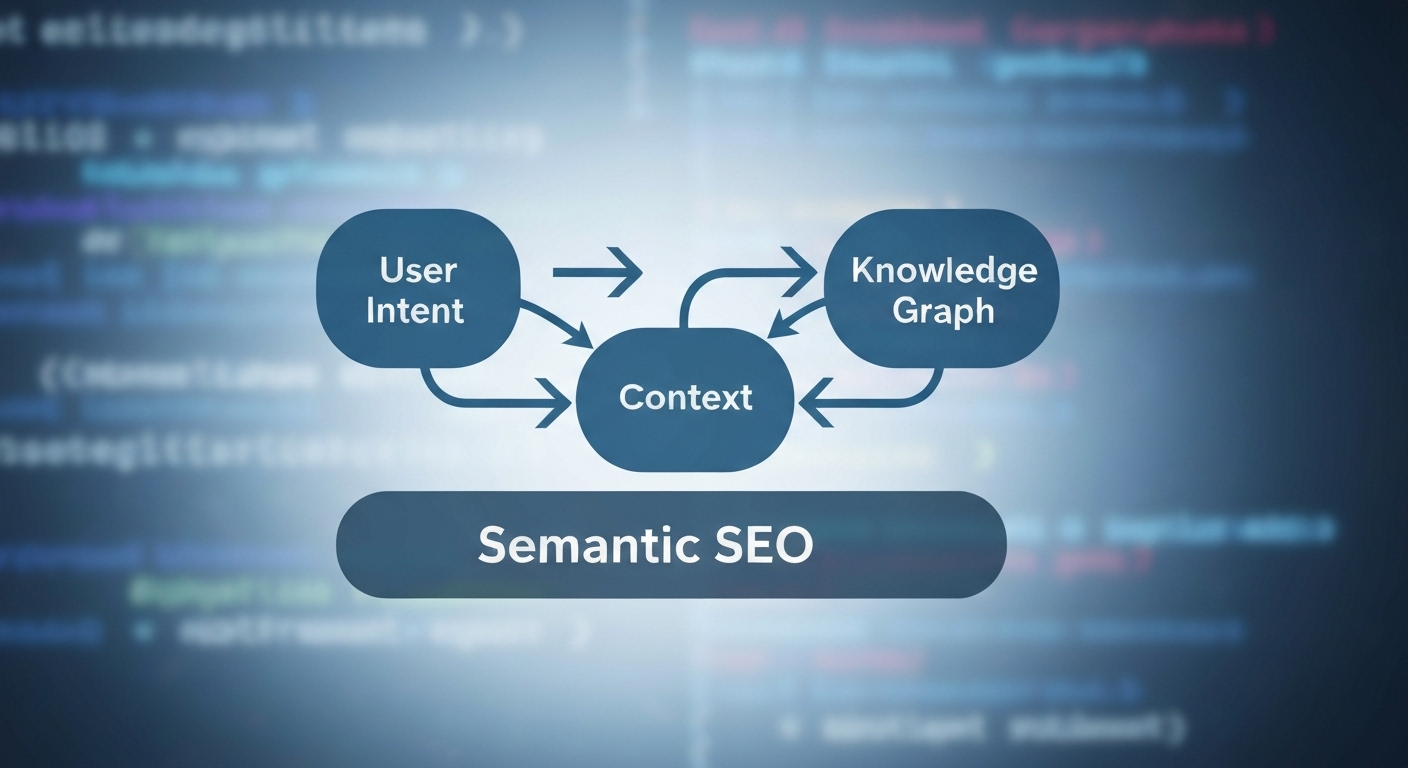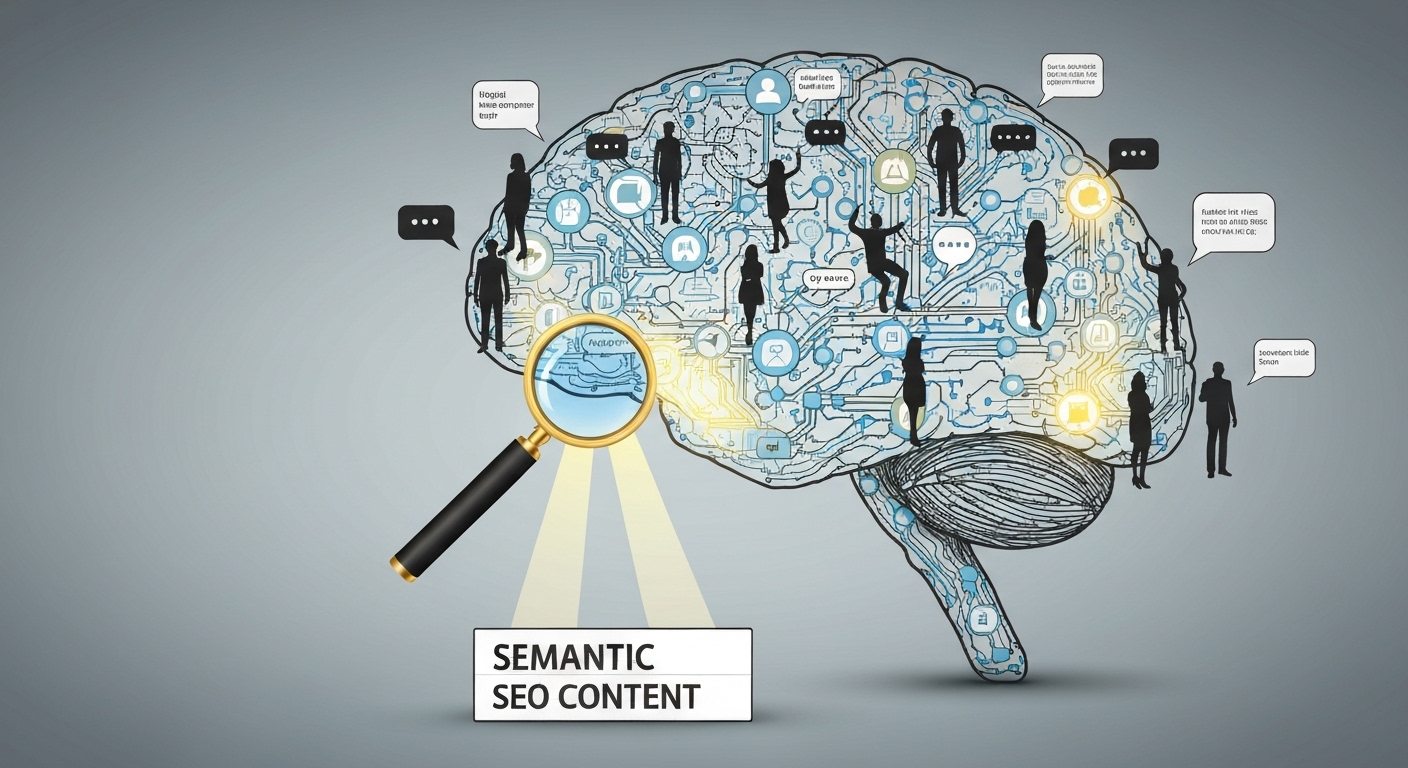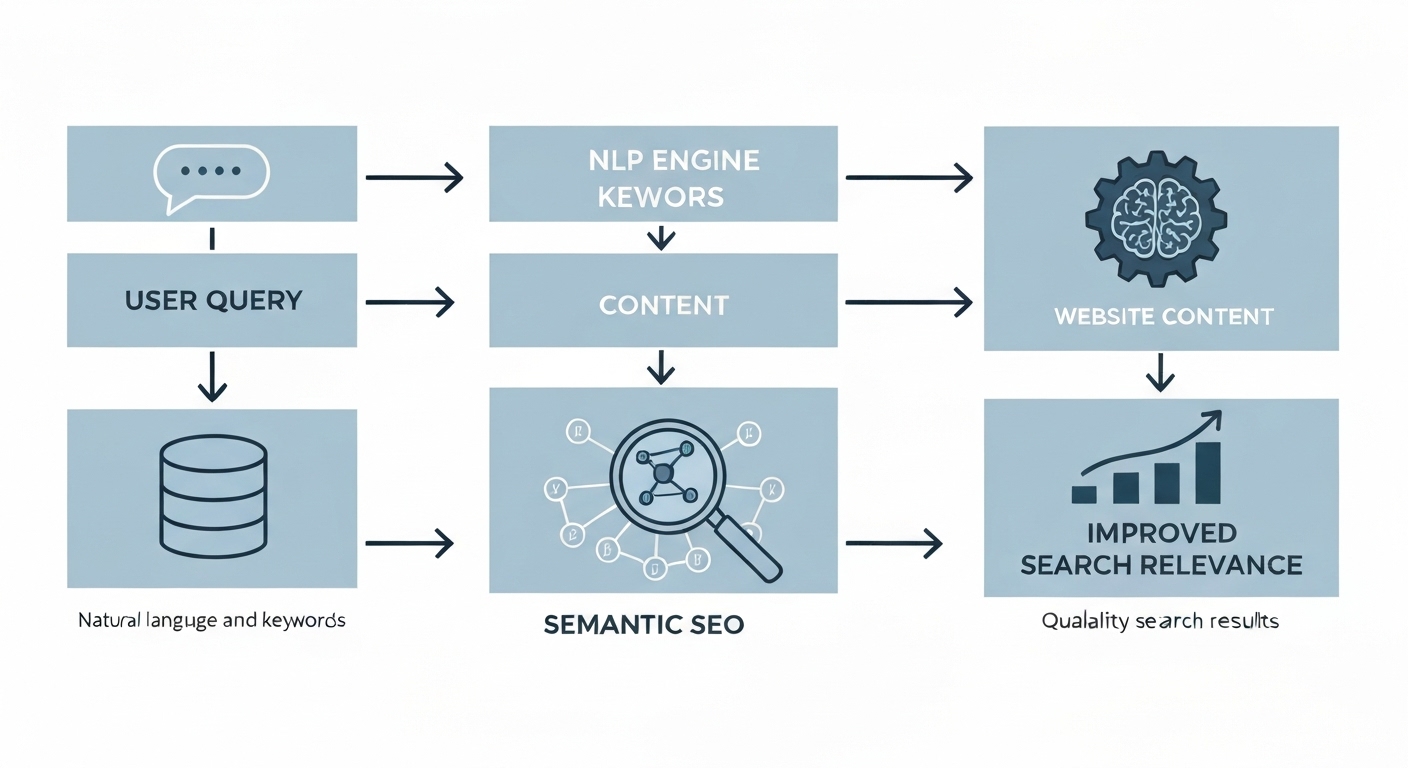What is Semantic SEO ? A Comprehensive Guide
What is semantic seo? It’s a modern approach to search engine optimization that focuses on understanding the user’s intent and the context of their search query, rather than just matching keywords.

Understanding Semantic Search
Semantic search is the ability of search engines to understand the meaning behind words, rather than just processing them as a string of characters. This allows search engines like Google to deliver more relevant and accurate search results. It goes beyond simple keyword matching to consider the relationships between words, concepts, and entities.

The Role of Knowledge Graphs
Knowledge graphs play a crucial role in semantic search. A knowledge graph is a database of entities (people, places, things) and their relationships. Search engines use knowledge graphs to understand the connections between different pieces of information and provide more comprehensive results. Google’s Knowledge Graph, for example, is a vast collection of interconnected facts that helps users discover information more efficiently.
Natural Language Processing (NLP) and Semantic SEO
Natural Language Processing (NLP) is a branch of artificial intelligence that enables computers to understand and process human language. NLP is essential for semantic SEO because it allows search engines to analyze the meaning and context of search queries and website content. By using NLP techniques, search engines can better understand user intent and deliver more relevant results. This is why understanding how NLP and flashs.cloud interrelate is crucial for any modern marketing strategy.

Why is Semantic SEO Important?
Semantic SEO is important because it helps websites rank higher in search results by providing content that is both relevant and informative. By focusing on user intent and context, websites can attract more qualified traffic and improve their overall search engine visibility. In essence, focusing on what the user means, rather than just what they type, can yield better results.
Improved User Experience
Semantic SEO leads to an improved user experience. When search engines understand the meaning behind user queries, they can deliver more relevant and accurate results. This means that users are more likely to find what they are looking for quickly and easily. A positive user experience can lead to increased engagement, lower bounce rates, and higher conversion rates.
Enhanced Search Engine Ranking
By optimizing your website for semantic search, you can enhance your search engine ranking. Search engines reward websites that provide high-quality, relevant content that meets the needs of users. Semantic SEO helps you create content that is both informative and engaging, which can lead to higher rankings and more organic traffic.
Strategies for Implementing Semantic SEO
Implementing semantic SEO involves several key strategies, including understanding user intent, creating comprehensive content, and using structured data.
Understanding User Intent
The first step in implementing semantic SEO is to understand user intent. This means identifying the underlying need or goal that users are trying to fulfill when they perform a search. By understanding user intent, you can create content that is specifically tailored to meet their needs.

Creating Comprehensive Content
Semantic SEO requires creating comprehensive content that covers a topic in depth. This means providing detailed information, answering common questions, and addressing related topics. The goal is to create a resource that is valuable and informative for users.
Using Structured Data
Structured data, such as schema markup, helps search engines understand the meaning and context of your website content. By adding structured data to your pages, you can provide search engines with more information about your content, such as its topic, author, and publication date. This can help search engines better understand your content and improve your search engine ranking.
The Future of Semantic SEO
The future of semantic SEO is likely to be even more focused on understanding user intent and context. As search engines become more sophisticated, they will be able to better understand the nuances of human language and deliver even more relevant and accurate results. This means that websites will need to continue to adapt their SEO strategies to focus on providing high-quality, informative content that meets the needs of users.
The Impact of AI and Machine Learning
AI and machine learning are playing an increasingly important role in semantic SEO. These technologies allow search engines to analyze vast amounts of data and identify patterns and relationships that would be impossible for humans to detect. By using AI and machine learning, search engines can better understand user intent and deliver more personalized search results.
Voice Search and Semantic SEO
Voice search is also impacting semantic SEO. As more people use voice assistants like Siri and Alexa to perform searches, websites need to optimize their content for voice queries. Voice searches tend to be longer and more conversational than traditional text searches, so websites need to create content that is tailored to these types of queries.
Examples of Semantic SEO in Action
Let’s consider some examples of semantic SEO in action to illustrate how it works in practice. Say a user searches for “best Italian restaurants near me.” A traditional SEO approach might focus on ranking websites that simply contain those keywords. However, a semantic SEO approach would consider the user’s location, the type of cuisine they are interested in, and their likely intent (to find a place to eat). The search engine would then use this information to provide a list of Italian restaurants that are close to the user’s location and have positive reviews.
Optimizing for “What is Semantic SEO”
To effectively optimize for the query “what is semantic seo”, you need to provide a comprehensive and easy-to-understand explanation of the concept. This includes defining the key terms, explaining the benefits, and providing examples of how it works in practice. By addressing the user’s intent directly and providing valuable information, you can increase your chances of ranking higher in search results.
Tools for Semantic SEO
Several tools can help you implement semantic SEO strategies. These include keyword research tools, content optimization tools, and structured data tools. Keyword research tools can help you identify the keywords and topics that are most relevant to your audience. Content optimization tools can help you create content that is both informative and engaging. Structured data tools can help you add schema markup to your pages and provide search engines with more information about your content. These all contribute to increased usa.gov website visibility.

Conclusion
In conclusion, what is semantic seo is a critical approach to modern SEO that focuses on understanding user intent and context. By implementing semantic SEO strategies, websites can improve their search engine ranking, attract more qualified traffic, and enhance the user experience. As search engines continue to evolve, semantic SEO will become even more important for achieving online success. By prioritizing user needs and creating high-quality, informative content, you can position your website for long-term success in the ever-changing world of search engine optimization.
HOTLINE
+84372 005 899


